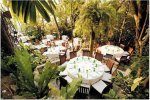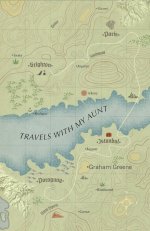Camel Ride in a Sandstorm
A camel ride in a sandstorm is just the thing to do when you visit Morocco!
Morocco edges the Atlantic Ocean and rims the northwest corner of Africa. It’s a captivating land of minarets, intricate tile design, oranges and olives, lush mountain passes and arid deserts, goats in trees, and camels.
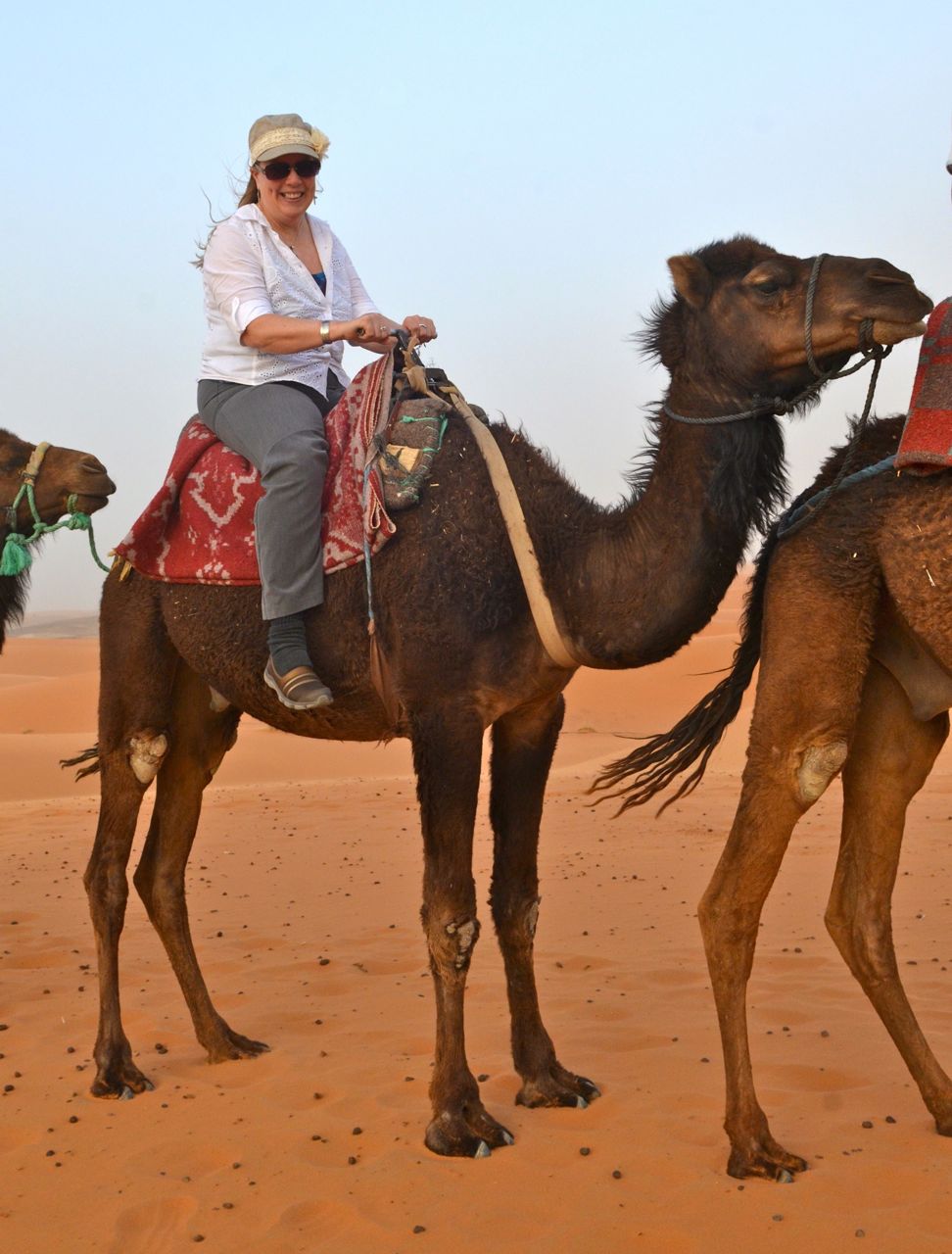 In Morocco, Kim Welsh is mounted & ready to ride!
In Morocco, Kim Welsh is mounted & ready to ride!A recent visit brought me up close with dromedaries during an excursion to the Erg Chebbi dunes at the remote Merzouga oasis.
The Merzouga oasis is a desert gateway near the Algerian border at the western edge of the continent-spanning Sahara.
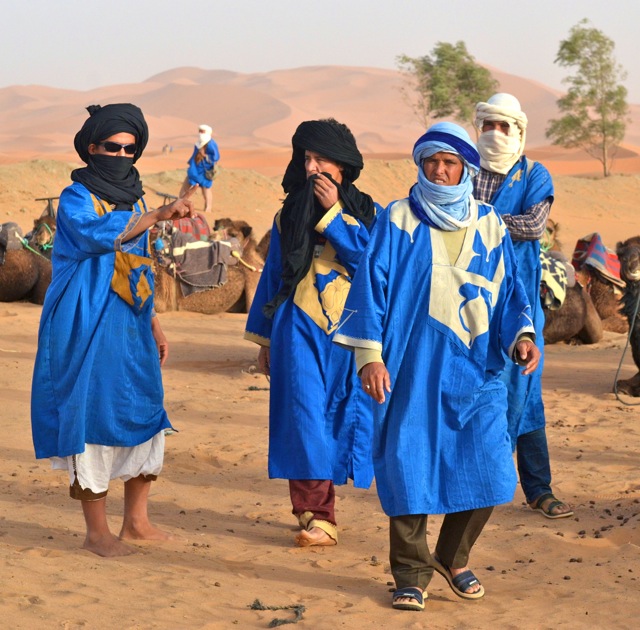 Berber guides in Morocco, photo by Kim Welsh
Berber guides in Morocco, photo by Kim WelshAt 4:30 on a warm and still spring afternoon, our group of 40 spirited adventurers headed out in several 4x4s from the exotic Xaluca Resort in Erfoud, a former caravan staging post, for the 38 mile trip to Erg Chebbi, criss-crossing the stony terrain on unpaved roads.
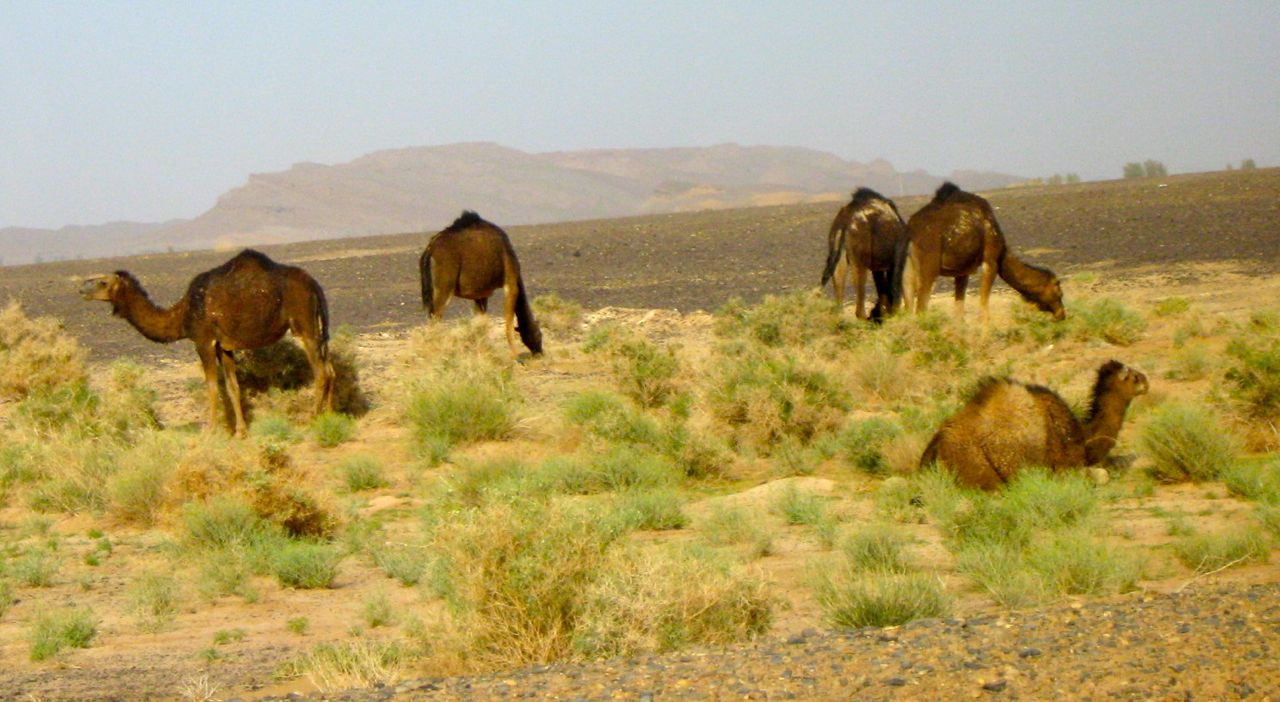 Stray camels in Morocco, photo by Cam Usher
Stray camels in Morocco, photo by Cam UsherOur white-robed driver Rashid pointed out stray livestock and the many abandoned mud huts and corrals among the sparse vegetation.
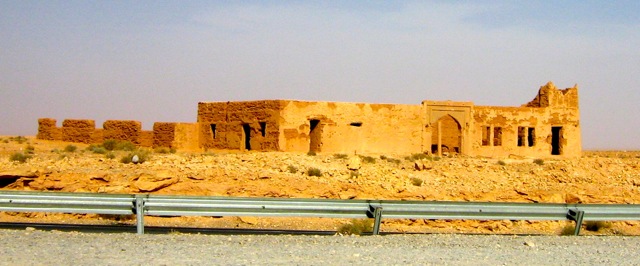 Abandoned homestead, photo by Cam Usher
Abandoned homestead, photo by Cam UsherEn route we visited the encampment of a nomadic Berber family of goat herders who proudly showed us their compound and spacious tent of woven goats’ wool.
After tea and photos, we resumed the drive and reached the sand’s edge just as light gusts riffled the ends of our long pre-turban scarves, traditional protection from the desert’s harsh elements.
To the south and east, miles of the spectacular hollows and peaks of the vermillion dunes, some topping 800 feet, spread before us.
Camel Ride in Morocco
As we enjoyed our first view of this vast expanse, lines of camels with tasseled reins and colorful saddle blankets were led to us.
Our guide Youssef helped us mount the sitting animals.
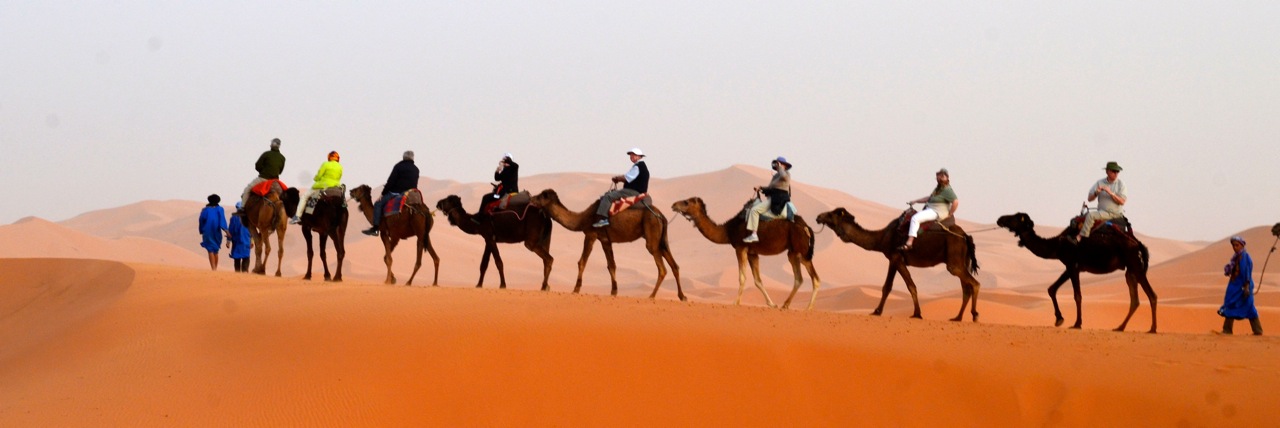 Row of camel riders in Morocco, photo by Kim Welsh
Row of camel riders in Morocco, photo by Kim WelshWhile sand began to whirl in the form of mini-dust devils, the cameleers tied scarves around our head, nose and mouth to shield our faces from stinging pieces of sediment.
On command, with a series of vertical jerks, the camels rose in unison to a standing position.
 Nomad living quarters in Morocco, photo by Cam Usher
Nomad living quarters in Morocco, photo by Cam UsherAs we began our trek, we settled comfortably into the long and fluid gait of the “ship of the desert.” Magnifying the history and immensity of our surroundings, an international yellow directional sign depicting a camel read, “Timbuktu 52 Days.”
In queues of six to ten, we headed toward the distant ridges. I marveled at this stark universe of endless reddish silt: sandbanks formed when shifting winds lifted bits of soil and sculpted them into moderately angled mounds peaking on the windward side and sharply slanting on the leeward side.
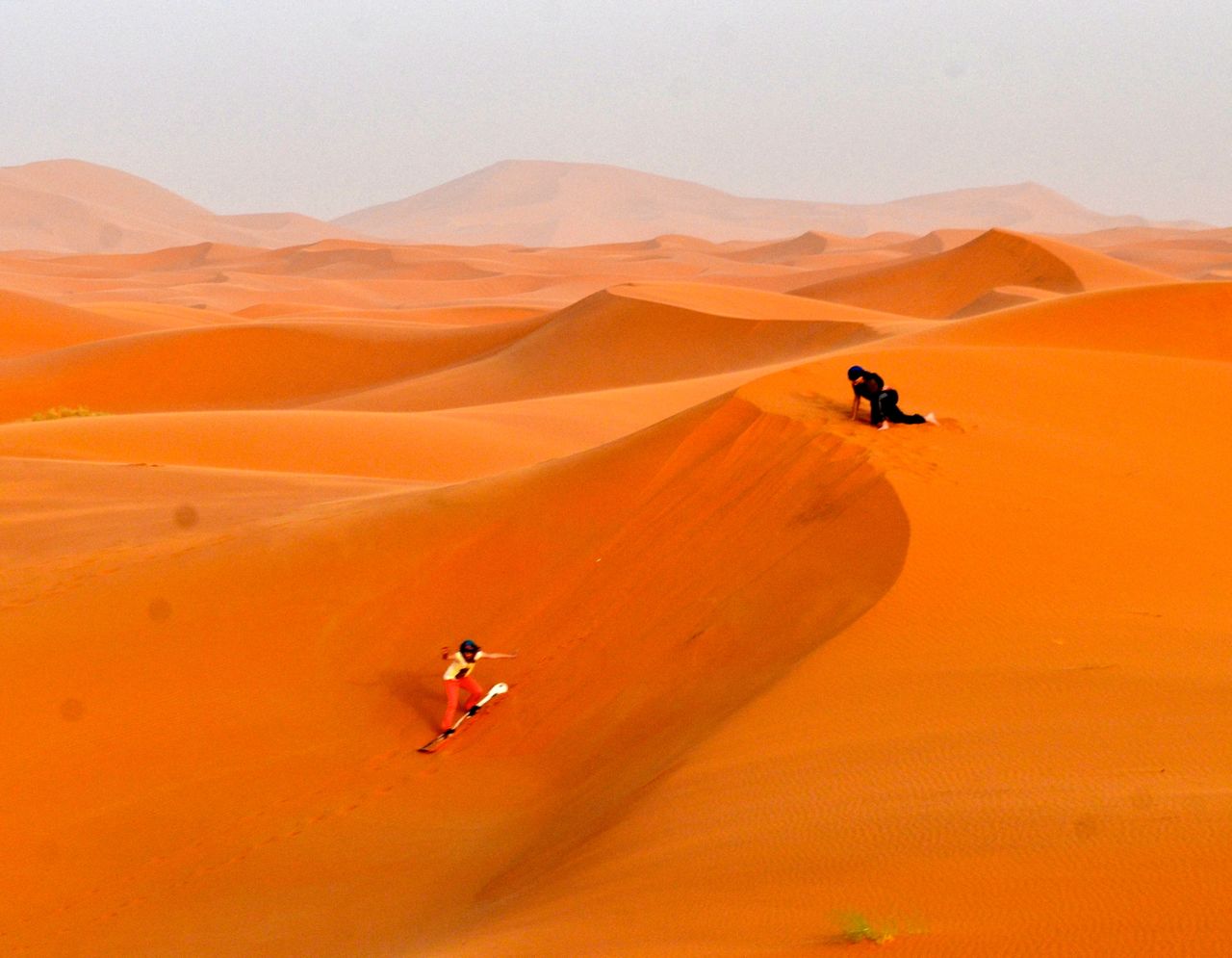 Snowboarders, photo by Kim Welsh
Snowboarders, photo by Kim WelshSeveral hills away, two exuberant kids used snowboards to noisily navigate the declines.
As we plodded
single-file along the top of the ridges and down steep depressions, the
south-easterly chergui breeze became
more insistent.
After 45 minutes we stopped, the camels knelt, and we alighted awkwardly. Yousef dressed several riders, including me, in photo-ready traditional Berber Blue kaftans.
Camel Ride in Morocco
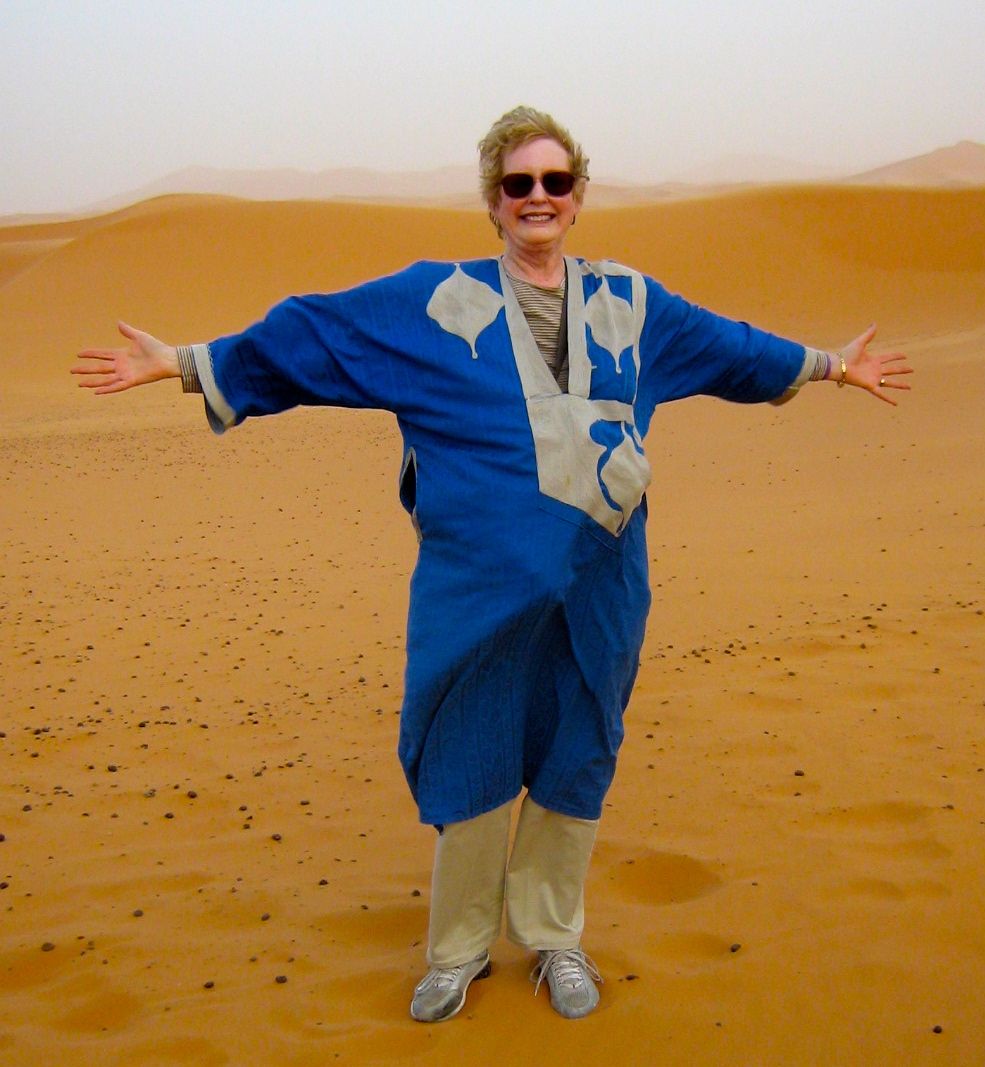 Cam in Morocco in Berber garb, photo by Kim Welsh
Cam in Morocco in Berber garb, photo by Kim WelshHe then summoned us to the top of a steep dune to enjoy the vivid sunset as the sun edged the horizon.
Struggling to scramble up the 40-foot wall of sand was like scaling a huge mound of microscopic orange ice crystals, a slippery slope to be sure!
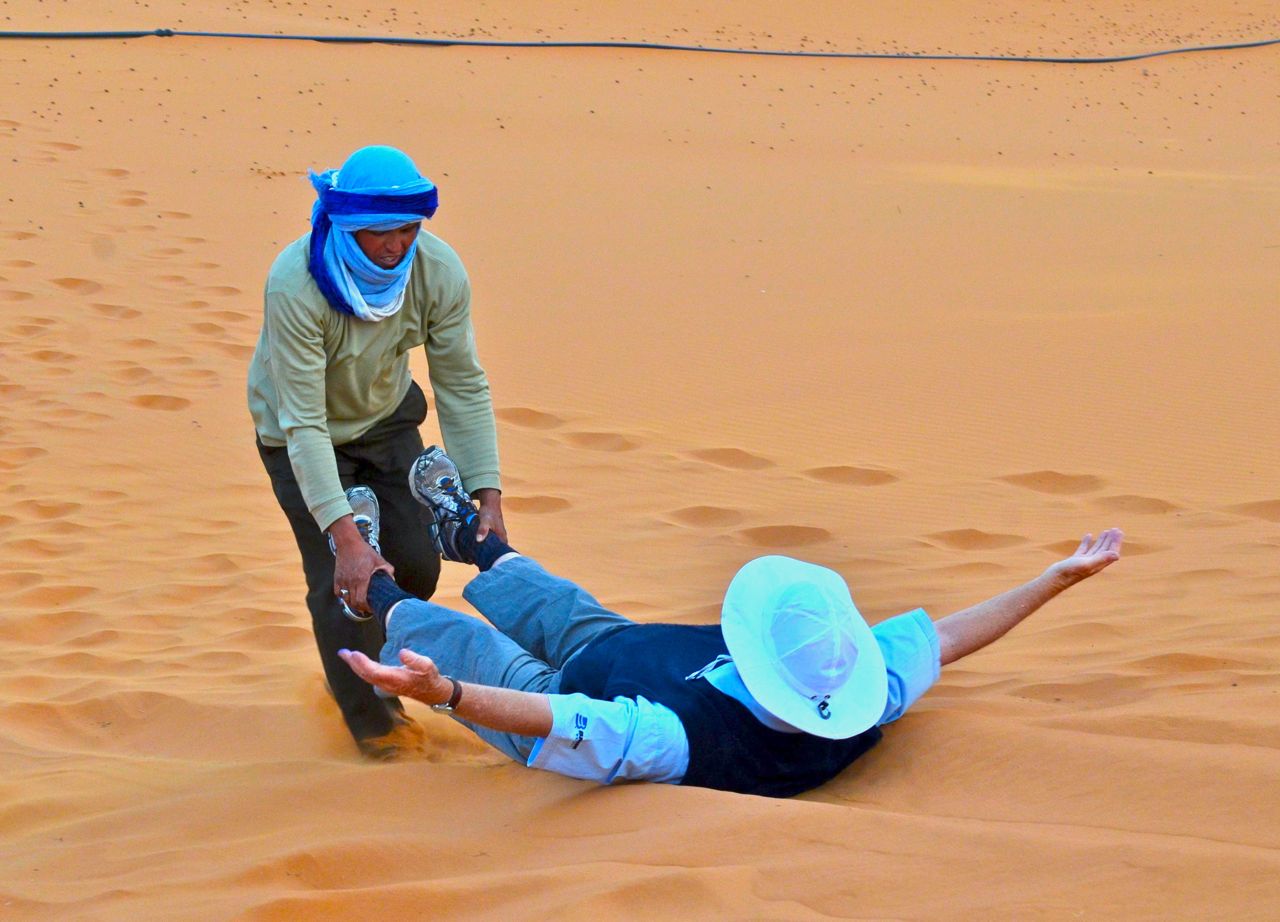 Cam being helped down the hill, photo by Kim Welsh
Cam being helped down the hill, photo by Kim WelshLacking traction, most of us continually slid back down until the guides pulled stragglers up the incline. Finally all reached the top. We sat taking photos and admired the dramatic panorama.
But frequently we had to turn away because the increased
velocity of the wind beat sharp sand particles against our faces.
After the sun and roseate clouds slowly disappeared, we skidded back down the slope in a seated position, remounted our steeds and were guided by the wranglers back to the caravansary.
In the dusk, an inferno of grit engulfed us. The twilight became a sinister shroud. All buildings and nearby tents had vanished and the intense dirt-laden winds limited visibility to about six feet.
Fortunately I was wearing glasses for eye protection, but sand pooled on my turban and clothing.
Camel Ride in Morocco
By the time we reached the inn, the wind was howling incessantly and verging on gale force, and the temperature had cooled considerably. We were enveloped by an ugly griege drape of darkness. No reputed starry night that evening!
We dismounted quickly, tipped generously and profusely thanked Yousef. Then we gladly retreated to the shelter of our 4x4 to remove shoes and layers of clothing clumped with grime. We also discovered cameras malfunctioning and embedded with debris.
We all agreed that a few zephyrs and granular discomfort were worth the extraordinary experience of enjoying the Sahara and its topography at sunset from camelback, but the long drive back to the hotel was arduous.
Only the vehicle’s headlights penetrated the moonless night. The pace was slow because the roads had disappeared, defining the phrase “middle of nowhere.”
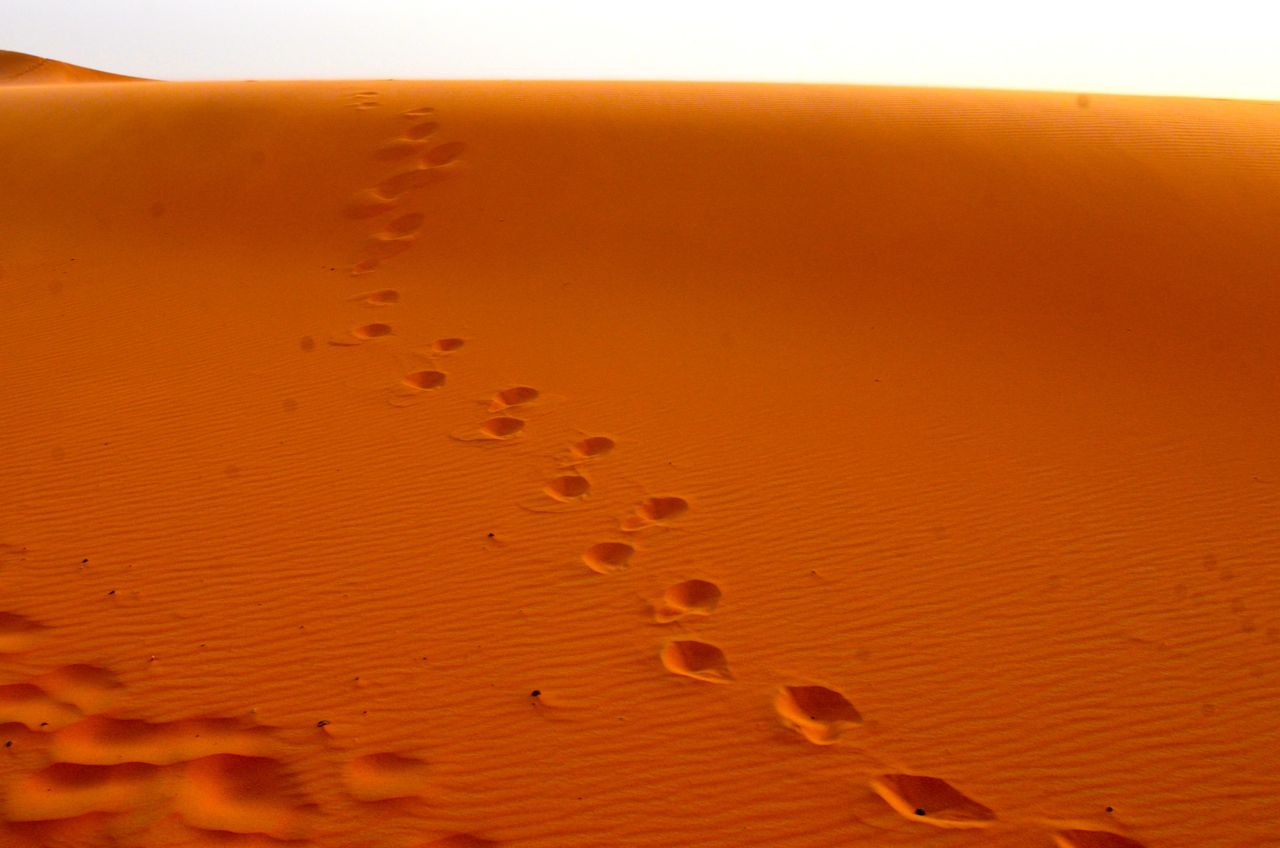 Camel footprints in the sand, photo by Kim Welsh
Camel footprints in the sand, photo by Kim WelshWhen we asked Rachid how he could pinpoint the correct route through the wasteland back to Erfoud, he smiled, tapped his forehead and said, “Berber GPS.”
By Cam Usher
Editor's note; The views expressed in this article are those of the author, and not necessarily of this website.
- Home ›
- True Tales ›
- Camel Ride



